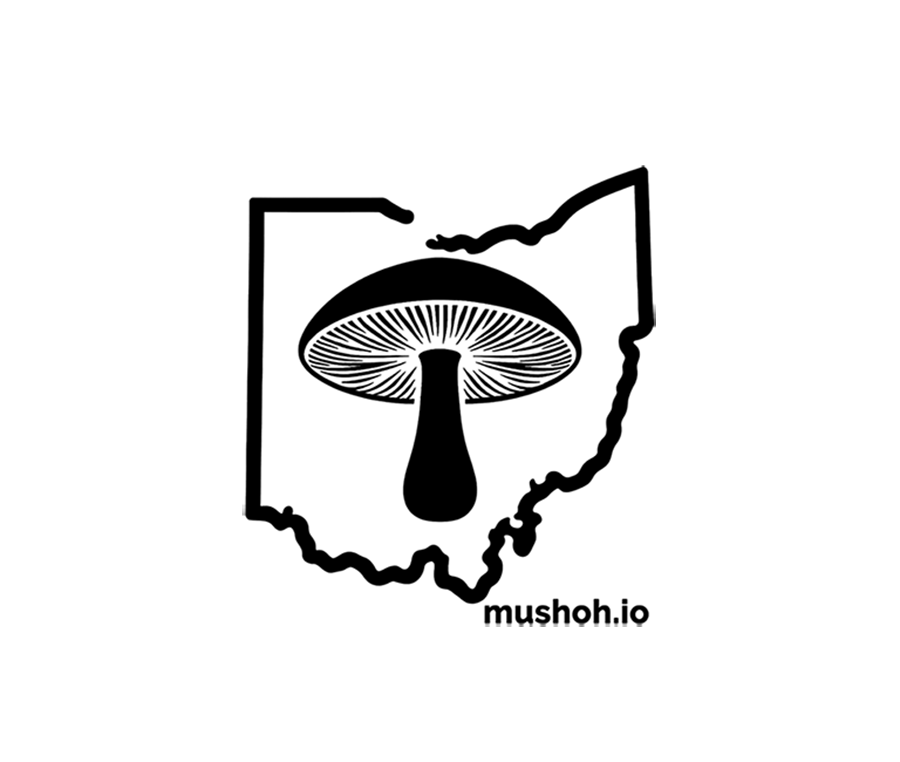Welcome to the exciting conclusion of the Mush Ohio Guide to Springtime Mushroom Cultivation! If you've followed along, chosen your favorite gourmet mushroom spawn like Black Pearl King, Lion's Mane, or Chestnut from Mush Ohio (Part 1 and Part 2), and successfully inoculated your garden bed or substrate (Part 3), you're on the verge of a delicious reward. Now, let's talk about the magic of fruiting, the joy of harvesting your chosen varieties, what to do post-harvest, and how to troubleshoot any bumps along the way.
The Magic Unfolds: Fruiting Your Gourmet Mushrooms
After several weeks or even a couple of months of patient waiting, your Mush Ohio mycelium (be it Black Pearl King, Lion's Mane, Chestnut, or another variety) will have fully colonized the substrate. Now, it’s ready to transition from vegetative growth to producing mushrooms (fruiting bodies)!
Environmental Triggers for Pinning (Mushroom Initiation):
Certain environmental cues tell the mycelium it's time to fruit. These are generally similar for many gourmet mushrooms suitable for spring cultivation in Ohio:
- Full Colonization: The mycelium must have thoroughly colonized the substrate.
-
Temperature Fluctuation/Drop: A noticeable drop in temperature, or consistent day/night fluctuations common in an Ohio spring, can trigger pinning (the formation of baby mushrooms). Black Pearl King, for instance, fruits well between
15-21°C(60-70°F), and Lion's Mane and Chestnut also prefer cooler conditions for fruiting. -
High Surface Humidity: The surface of your bed or casing layer needs very high humidity (
85-95% RH). - Increased Fresh Air Exchange (FAE): A significant increase in fresh air (and thus lower CO2) is critical.
- Light: Some indirect or shaded sunlight often helps with proper development.
Recognizing Primordia ("Pins") for Different Species:
Keep a keen eye out! Primordia, or "pins," are the first tiny, visible signs of mushroom formation.

- For Black Pearl King & Chestnut: They often appear as small, dense, white (or brownish for Chestnut) hyphal knots or miniature mushroom bumps.
- For Lion's Mane: Pins may look like tiny, dense, white, coral-like formations that will develop into the characteristic spines.
- This is a delicate stage; pins are vulnerable to drying out, so maintain surface moisture!
Mushroom Development:
If conditions remain favorable, these pins will develop into mature mushrooms. Black Pearl King and Chestnut mushrooms will see stems elongate and caps expand. Lion's Mane will develop its characteristic cascading spines.

Watering During Fruiting:
Maintain high humidity. Avoid blasting developing mushrooms with a forceful spray. Gently water the area around the mushroom clusters if the substrate or casing seems to be drying. Lightly misting the air around the bed can help in dry Ohio weather.
Harvest Time! When and How to Pick Your Gourmet Mushrooms
Harvesting at the right moment ensures the best flavor, texture, and can encourage more mushrooms to grow.

When to Pick Your Specific Variety:
- Black Pearl King: Harvest when the cap edge begins to uncurl or flatten but before it turns significantly upward.
- Lion's Mane: Harvest when the spines have elongated but before the mushroom starts to yellow or look water-soaked. It should feel firm and dense.
- Chestnut Mushrooms: Pick when the caps are still somewhat convex and before they flatten out completely. They are often harvested as clusters.
- General Tip: For most mushrooms, harvesting before they drop a massive amount of spores is ideal for quality and shelf life.
Harvesting Techniques (Generally Applicable):
- Cleanliness: Use clean hands or a sanitized knife.
- Method: For clustered mushrooms like Black Pearl King or Chestnut, you can often harvest the entire cluster by grasping the base firmly, then twisting and pulling gently. Alternatively, use a clean, sharp knife to cut the cluster or individual mushrooms (like Lion's Mane) at their base, as flush with the substrate as possible.
- No Stumps: If using a knife, cut close to the substrate.
Keeping the Good Times Rolling: Post-Harvest Care & Subsequent Flushes
Your harvest doesn't have to be a one-time event for many of these species!
- Rehydrate: Fruiting removes moisture. After harvest, gently water the bed/substrate to rehydrate it.
- Patience for More: If conditions remain favorable, your Mush Ohio mushroom patch can produce subsequent "flushes," typically 1-3 weeks later.
Uh Oh! Troubleshooting Common Outdoor Cultivation Challenges
Growing outdoors means working with nature. Some common challenges include:
- Contamination (Molds/Bacteria): Ensure good drainage and airflow. Vigorous colonization with quality Mush Ohio spawn is the best defense.
- Pests (Slugs, Snails, Fungus Gnats): Use organic deterrents.
- Environmental Extremes: Protect from drought, waterlogging, or excessive heat/cold outside the preferred range of your chosen species.
- Slow Growth or No Fruiting: Could be spawn issues (unlikely with fresh Mush Ohio spawn!), incorrect substrate for the species, moisture problems, or missing fruiting triggers. Review ideal conditions for your specific mushroom type.
The Gift That Keeps Giving: What to Do with Spent Mushroom Substrate (SMS)
Once your mushroom bed has finished producing, the "spent mushroom substrate" (SMS) is a fantastic soil amendment, regardless of the mushroom species grown.
- Uses: Mix into garden beds, use as mulch, or add to your compost pile.
Conclusion: Your Mush Ohio Fungal Adventure – A Rewarding Journey!
Introducing mushroom cultivation to your spring gardening with versatile species like Black Pearl King, the unique Lion's Mane, or the flavorful Chestnut mushroom, using reliable grain spawn from Mush Ohio, adds an incredibly rewarding dimension. From preparing your garden in the Ohio spring to witnessing the mycelium spread, spotting those first precious pins, and finally harvesting your own gourmet mushrooms – it’s a journey of patience, observation, and delicious results.
This adventure connects you more deeply to the fascinating world of fungi. We hope this series has inspired you to embark on your own mushroom growing adventure with the varieties we offer. May your spring be filled with thriving mycelium and bountiful harvests!
Share your Mush Ohio gourmet mushroom growing experiences with us! We'd love to see your success. Visit Mush Ohio online for more resources, to check out our full range of grain spawn, and to replenish your mushroom growing supplies.
Glossary of Common Fungal Terms
Mycelium: The Root of the Matter. Think of mycelium as the "roots" of a mushroom. It's a vast network of tiny, white, thread-like structures that grow underground or within whatever the mushroom is eating. This is the main body of the fungus, working behind the scenes. Think of it like the apple tree, not just the apple.
Substrate: Mushroom Food. This is simply what the mycelium eats to grow! It can be anything from wood chips and straw to coffee grounds or grain. Different mushrooms have different favorite foods. It's the soil and nutrients for our mushroom plant.
Spawn: The Mushroom Starter Kit. Spawn is basically a carrier (like grain or sawdust) that already has healthy, growing mycelium on it. You add this to your main "substrate" (mushroom food) to kickstart the growing process. Think of it as seeds or a starter plant for your garden.
Fruiting Body: The Mushroom Itself! This is the part we all recognize – the cap and stem that pops up. It's the reproductive structure of the fungus, like the fruit of a plant. Its job is to produce and spread spores. This is the delicious (or interesting-looking) part you harvest!
Primordia (or Pins): Baby Mushrooms. These are the tiny baby mushrooms that first appear. They look like little bumps or pins before they grow into full-sized fruiting bodies. It's the exciting moment you see the very first signs of your future mushrooms!
Pasteurization: Cleaning for Healthy Growth (Not Quite Sterile). This is a process of heating the substrate (mushroom food) to a specific temperature to reduce or eliminate unwanted competitor organisms (like molds or bacteria) without killing everything. This gives the mushroom mycelium a head start. Think of it as giving your mushroom food a good, hot bath to get rid of most of the germs.
Sterilization: Super Clean for a Perfect Start. This is a more intense process that aims to kill all living organisms in the substrate or on equipment. This creates a completely clean slate, often needed for more sensitive mushroom species or for creating spawn. This is like creating a hospital-grade clean room for your mushroom food, ensuring no bad guys are left.
Saprophyte: Nature's Recycler. This describes fungi that feed on dead or decaying organic matter, like fallen logs, dead leaves, or compost. They are essential for breaking down this material and returning nutrients to the ecosystem. Most commonly cultivated mushrooms are saprophytes. These are the eco-warriors of the fungi world, tidying up and recycling nature's leftovers.
Lignocellulosic: Woody Goodness. This refers to materials that are rich in lignin and cellulose – the tough, woody parts of plants. Think wood, straw, and other fibrous plant matter. Many important mushrooms love to munch on these types of substrates. Basically, it means "made of tough plant stuff" – a favorite food for many mushrooms!

